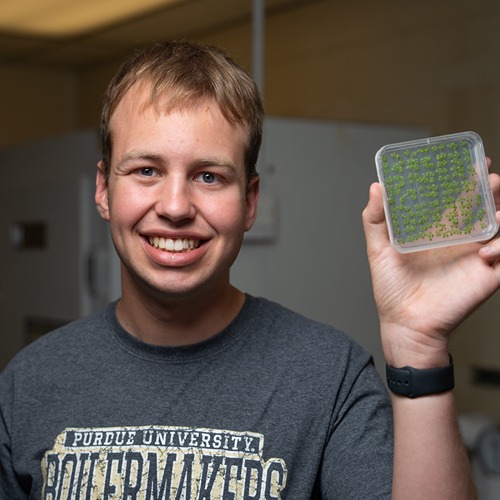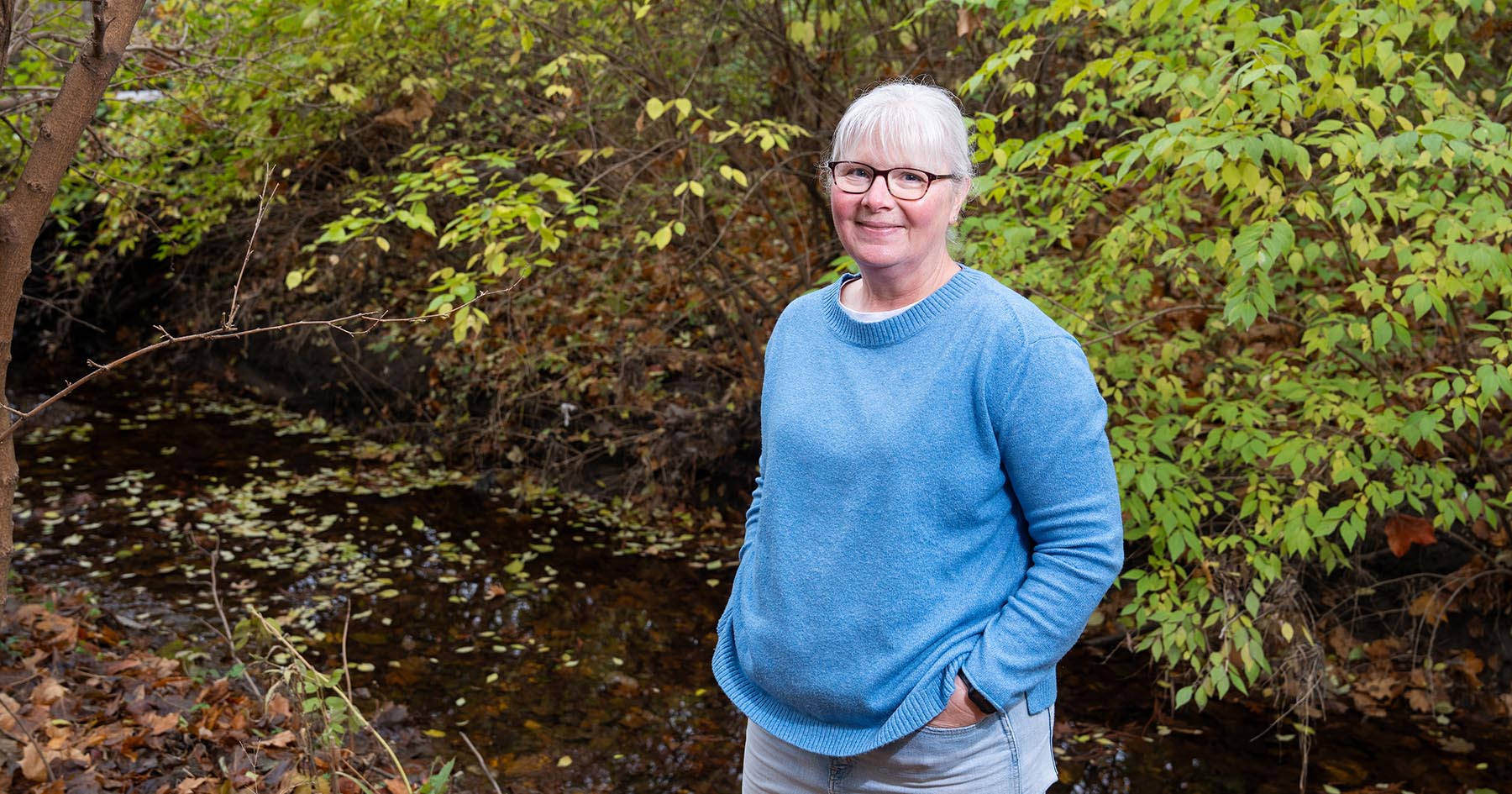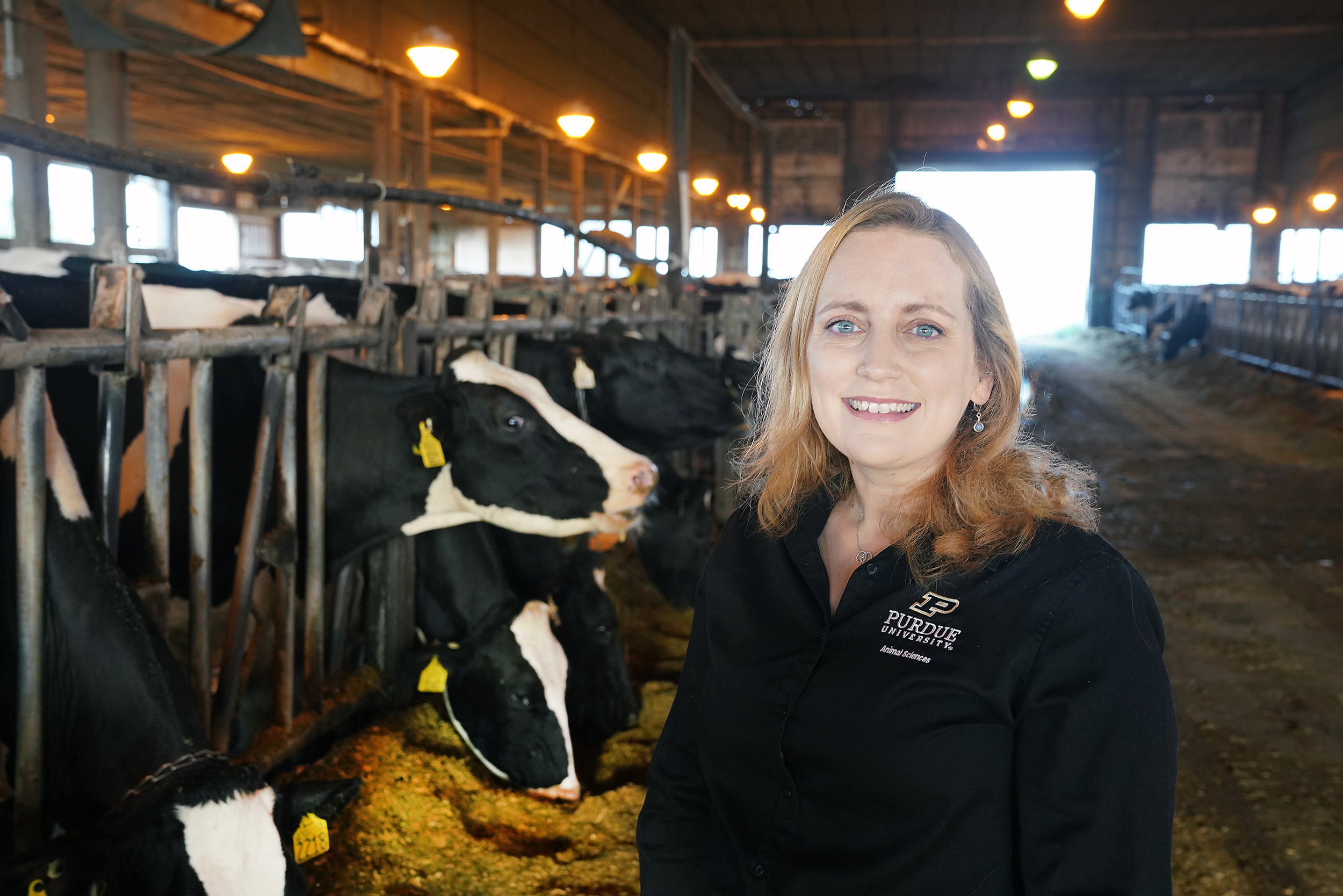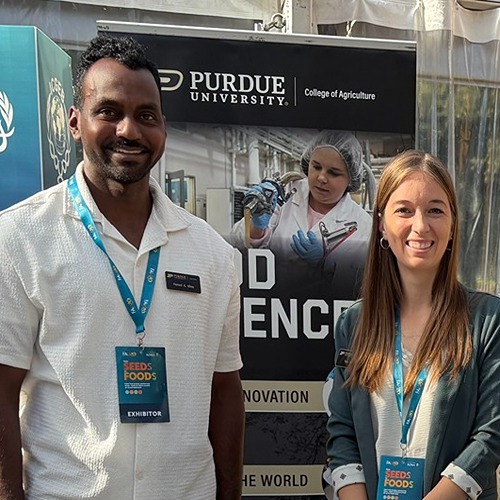Groundhogs can’t predict the weather but they do poop underground
G
roundhogs are good at many things, said Brian MacGowan, Purdue University Extension wildlife specialist and Forestry and Natural Resources Extension coordinator, but predicting the weather definitely isn’t one of them.
The lore surrounding Groundhog Day originated in Germany where people used the reactions of badgers and hedgehogs to gauge weather patterns. When the tradition eventually migrated to America, Jarred Brooke, Extension wildlife specialist, said groundhogs, which can be found throughout the United States, became the mammalian forecaster of choice.
“They’re crafty little critters,” MacGowan explained, “which is why they’re found in so many different places. They’re habitat generalists and can live in open woodlands, grasslands, what have you.”
While MacGowan and Brooke agreed groundhogs don’t have a great track-record of weather prediction, other facts make groundhogs one of the more interesting members of the squirrel-family.
“They actually poop underground. In their burrows system they have an area where they go to the bathroom,” MacGowan said. In fact, their burrows are quite extensive and groundhogs have been known to tunnel as far as three or four feet deep.
Although groundhogs aren’t the speediest creatures, they are avid climbers and swimmers, Brooke added, skills they use to escape predators and gather food. Groundhogs are herbivores but will munch on anything plant-based from grass to tree bark. They’re not picky, Brooke said.
They are also one of the few mammals that truly hibernates, MacGowan added, sleeping for several months and significantly lowering their body temperature.
“The males come out around February to look for females,” Brooke said, which might be one reason groundhogs were drafted into the early February forecasting tradition.
Hoosiers, however, will have to wait until mid-February before seeing hide or tail of the groundhogs as they don’t emerge until later in the month. “In Indiana, I guess one could say there’s always six more weeks of winter,” MacGowan joked.
While groundhogs aren’t aggressive, Brooke said, they can be a nuisance, eating away at gardens, crops and landscaping. Their burrows can also endanger the structural integrity of buildings and livestock. Animals have been known to get their legs stuck in boroughs. One of their favorite snacks to munch on, he added, is soybeans.
Because of this, Brooke and MacGowan work closely with farmers and landowners on control strategies and mitigating damages from groundhogs and other animals. Not everyone is a fan of groundhogs and according to the Indiana Department of Natural Resources, groundhogs can be captured or killed year-round without a permit or hunting or trapping license.
“For example you either have to kill it on site or, if you’re not going to kill it, release it in the same county where it was captured with the permission of a landowner,” MacGowan explained.





